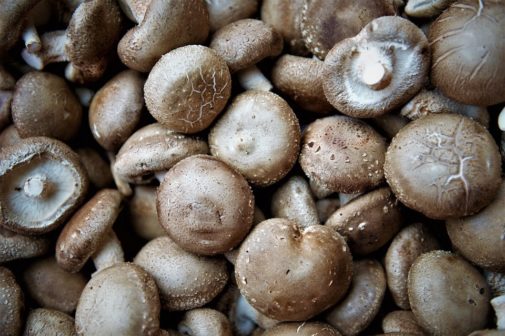Dermatologist Rosa Taberner has seen the case several times in her office: a patient, alarmed, arrives with lesions similar to whiplash on her trunk and limbs that cause itching. He does not know the causes and does not remember having suffered blows or scratches of any kind, so he finds no explanation for what happens to him .
After an observation and analysis of the history and background, the specialist often finds the key: in the previous two or three days, the patient has eaten in an Asian restaurant or has prepared oriental dishes at home. "The shiitake mushrooms were part of the menu?" He asks. If the answer is yes, you already have the diagnosis. Shiitake flagellated dermatitis.
These types of mushrooms ( Lentinus edodes ) can cause, if they are raw or undercooked, a skin reaction in susceptible people reminiscent of that produced by whips or scratches, explains the dermatologist, specialist at Son Llàtzer Hospital in Mallorca.
"The lesions are very characteristic," he continues, but until a few years ago, cases of this type of dermatitis had not been described in Spain, since the consumption of shiitake mushrooms was limited to eastern countries, such as China or Japan.
Globalization, however, is making this dermatitis increasingly common in our country because the intake of these mushrooms is already common. The first case published in the Spanish literature dates from 2011, but only in his consultation, Taberner has seen this year at least three. They are no longer considered exceptional cadres in the western world, as was just a decade ago.
"The cases can be quite spectacular, but all are banal," says the specialist, who recalls that they do not occur because the food is in poor condition or carry any disease.
"It is believed that the person responsible for this curious eruption is a protein, a mushroom polysaccharide, the lentinan -D-glucan, which is degraded by heat. That is why dermatitis only occurs if the mushrooms consumed were raw or little cooked and always in predisposed individuals, "explains Taberner.
Experts believe that the lesions occur as a result of a delayed hypersensitivity reaction, although the exact mechanisms that produce redness, itching and the characteristic marks on the skin remain unknown.
On the other hand, Taberner recalls that, in addition, this substance can inhibit platelet production, so "its intake is discouraged in large quantities in pregnant women and patients with bleeding disorders."
Symptomatic treatment
The dermatitis picture resolves on its own within a few days and only symptomatic treatment is indicated to relieve discomfort and itching, he says.
In their appearance, cases of flagellant shiitake dermatitis remind of the lesions that appear in some patients after undergoing chemotherapy treatments such as bleomycin . "Although they do not share the same mechanism of action, the eruption that appears is very similar," says Taberner.
But shiitake mushrooms are not the only food that can cause rashes and skin reactions. Other plant and animal products can cause dermatitis, although, in most cases, these injuries are caused by contact and not after intake. Garlic and meat proteins, for example, are some of these 'culprits' known to dermatologists.
"Dermatitis caused by manipulation of proteins of vegetable or animal origin are frequent in hospitality and other professions related to food handling", explain María Antonia Pastor and María Elena Gatica Ortega, dermatologists of the Spanish Research Group on Contact Dermatitis and Allergy Dermal of the Spanish Academy of Dermatology and Venereology (AEDV).
This type of reaction "usually affects the backs of the hands and fingers" , producing "redness, dryness and peeling" in a chronic way and "very itchy hives" after immediate contact, they add.
Typically, they continue, the reaction is triggered after continued exposure to a particular food. But the problem only appears after contact with the skin, not when that product is consumed. For example, a cook may have trouble handling garlic directly, but not ingesting it. "Digestion conditions changes in protein structure, losing the ability to induce allergy," Pastor and Gatica explain.
Patients who suffer from this type of contact dermatitis usually have "lost the barrier function of the skin," dermatologists conclude. This facilitates the penetration of the protein, and, consequently, the striking reaction.
According to the criteria of The Trust Project
Know more- Science and Health
Google Technology achieves quantum supremacy with an impossible task to solve for today's computers
Environmentally-friendly resignations, disagreements and accusations in the scientific committee that studies the Mar Menor
AstrophysicsDecoding the chemistry behind a stellar fusion

